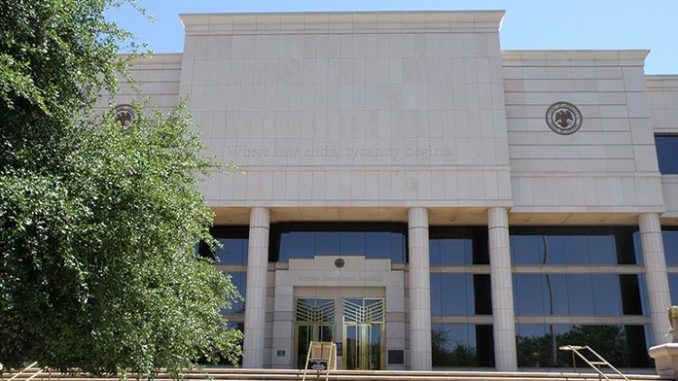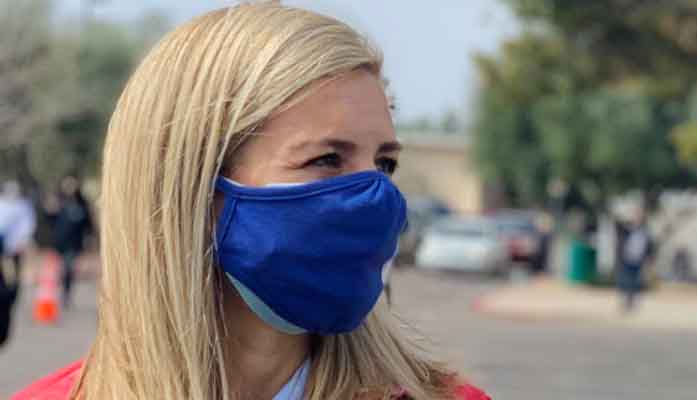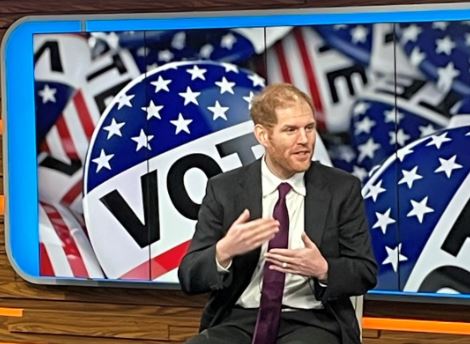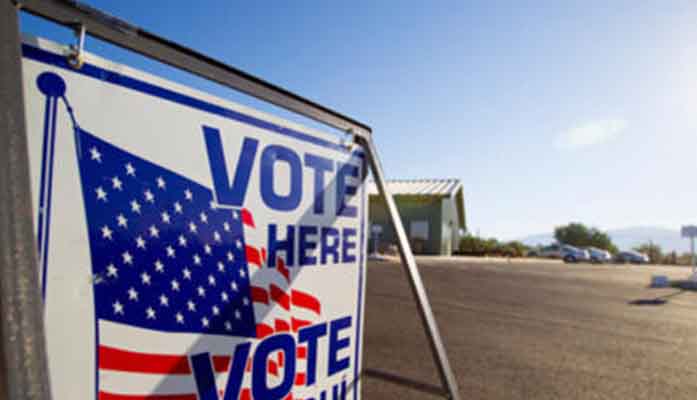
by Corinne Murdock | Nov 26, 2022 | News
By Corinne Murdock |
Of all the organizations tasked with overseeing Black Lives Matter’s millions, it was a nonprofit based in Tucson.
Alliance for Global Justice (AFGJ) handled over $36 million for Black Lives Matter (BLM) organizations: the controversial network facing scrutiny for the use of its funds. That $36 million was part of nearly $50 million handled on behalf of bail funds, other social reform organizations, and campaigns to free “political prisoners.”
Prior to 2020, this 24-year-old nonprofit was a lesser-known controversial group that averaged $3.1 million in revenue every year. Then, like many other social justice organizations, AFGJ’s revenues flooded with millions following George Floyd’s death and the BLM riots that swept the nation.
AFGJ’s History
AFGJ was established in 1998 by the Nicaragua Network, which was founded to support the socialist Sandinista regime and armed revolution. Key members of their leadership include Sandinistas, as documented at length by the Capital Research Center.
AFGJ’s express mission is to overhaul current social and economic systems to achieve justice, citing the current concentrations of wealth and power as the cause of all oppression. AFGJ maintains a list of “Political Prisoners,” or “prisoners of Empire,” for whose freedom or exoneration they advocate for: namely, murderers, terrorists, and other extremists, such as members of the Black Panther Party; BLM rioters; Ana Belen Montes, a 9/11-era Cuban spy; and Daniel Baker, an antifa activist.
AFGJ’s issuance of funds aligns with their mission to upend American law and social norms.
Over the years, AFGJ has funded a number of controversial organizations, including Fronterizo Fianza Fund (now Froterizx Fianza Fund): they bail out detained illegal immigrants to free them into the country. AFGJ has funded and serves as a fiscal sponsor of Assata’s Daughters: the Marxist revolutionary group dedicated to infamous cop killer and FBI Most Wanted Terrorist, Assata Shakur.
Comparisons of other tax filings by research groups revealed that AFGJ has received past funding from a number of major left-wing dark money benefactors, including George Soros and the Tides Foundation. However, AFGJ hides its donors from disclosure.
Once 2020 hit, the prior millions from these major benefactors became paltry by comparison.
Movement for Black Lives (M4BL): $30.6 million
The organization that received the majority of this influx was Movement for Black Lives (M4BL), a coalition of BLM and its affiliates for which AFGJ acted as a fiscal sponsor. That meant that it managed M4BL’s finances in exchange for an eight percent commission on revenues.
AFGJ’s fiscal sponsorship for M4BL ended on either January 6 or 7, 2021 — right as the Capitol invasion unfolded. After January 6, the Common Counsel Foundation became the listed fiscal sponsor on M4BL’s website.
AFGJ also issued over $145,000 to “Persist M4BL” in 2020, an advocacy arm of M4BL.
M4BL claims to be a coalition of over 50 member organizations. Although M4BL doesn’t reveal the names of these organizations, in the past it advertised the membership of the Black Lives Matter Foundation, or the “Black Lives Matter Global Network Foundation” — known simply by most as “BLM.”
According to their respective 2020 tax filings, M4BL and BLM headquarters were one mile apart: a mere five-minute drive without traffic. M4BL’s address was 1624 Franklin St, Oakland, CA 94612, and BLM’s address was 248 3rd St, Oakland CA 94612.
However, different addresses for BLM’s headquarters exist. The filing uploaded in May on BLM’s website displays the Oakland, California address just one mile away from M4BL, while the filing scanned into the IRS website in June displays the Elias Law Group address in Washington, D.C.
Elias Law Group is the firm belonging to Marc Elias: the Democratic Party’s top lawyer, infamous for his central role in Russiagate. Presently, where election-related controversy ensues, Elias is sure to appear. Elias’ firm stated on BLM’s IRS filing that it presently keeps all of BLM’s books and records.
BLM also listed a different address for its headquarters on its 2019 IRS form: a nonexistent address, as reported by The Washington Examiner in January. An unidentified BLM spokesperson told The Examiner that they don’t maintain a permanent office at the time.
BLM’s Exploited Millions
Floyd, the man whose death sparked nationwide racial unrest and boosted the fundraising for organizations like AFGJ, wasn’t the beneficiary of any of the BLM funds. As the “The Greatest Lie Ever Sold” documentary noted, Floyd’s roommates struggled to cover the portion of rent Floyd could no longer pay. They also couldn’t afford to pay a towing service to remove Floyd’s car from the driveway.
BLM reportedly didn’t offer Floyd’s roommates any financial assistance.
Prior to the release of the documentary, BLM dismissed the exposé as a “white supremacy” initiative. The woman behind the documentary is Candace Owens, a Black woman.
BLM co-founder and then-executive director Patrisse Cullors bought mansions for $3 million according to the New York Post, and then BLM secretly bought another mansion for around $6 million according to New York Magazine. That mansion, where Cullors resides, hosted several lavish parties, including a birthday party for her son and a celebration of President Joe Biden’s inauguration.
BLM paid Cullors’ brother $841,000 for security services; prior to 2020, her brother worked as a graffiti artist. BLM also paid the father of Cullors’ child, Damon Turner, nearly $970,000 to “produce live events” and nondescript “creative services.”
As The New York Post reported, over $8 million went to M4BJ: a Canadian nonprofit run by Cullor’s wife, Janaya Khan. Of that funding, $6.3 million was used to buy a mansion in Toronto, Canada.
$2.6 million went to LGBTQ organizations, namely transgender organizations. Just as with the other millions, a number of these organizations applied the funds toward real estate.
One of the LGBTQ organizations was Black Trans Media, a Brooklyn, New York organization whose fiscal sponsor is AFGJ.
AFGJ Fiscal Sponsorship: $49.6 Million
“AFGJ acted as fiscal sponsor for 19 groups affiliated with Black Lives Matter, Movement for Black Lives, bail funds, and long-existing prison abolition or reform organizations and campaigns to free political prisoners.” (AFGJ’s program service accomplishments disclosure, 2020 tax filing)
AFGJ’s fiscal sponsorship organizations circulated nearly $50 million in 2020. This was unprecedented. Prior to 2020, these organizations came nowhere near millions in revenue. Based on AFGJ’s commission rate on contributions, that would amount to around $4 million at least.
AFGJ served as a fiscal sponsor for three bail funds: Colorado Freedom Fund, Bukit Bail Fund, and Action Bail Fund New York. Altogether, these three bail fund organizations received over $2.8 million. According to AFGJ’s previous tax filings, none of the three bail funds received any funding from AFGJ in the past.
Action Bail Fund New York, which received over $417,000, lists its headquarters at the same address as AFGJ.
Notably, one bail fund organization that AFGJ donated to in 2020, but wasn’t a fiscal sponsor for, received half of what it got in 2019.
On its website, AFGJ states that it serves as a fiscal sponsor for 121 organizations.
BLM Chapters in Oklahoma City and Louisville: $5.4 million
BLM Oklahoma City (OKC) received the bigger cut of the two funds: $4.25 million even. AFGJ also serves as BLM OKC’s fiscal sponsor.
In the summer of 2020, BLM OKC posted around $3.5 million in bonds to release BLM rioters. Last June, BLM OKC posted a $400,000 bond for a man charged for murdering a man allegedly breaking into his unlicensed marijuana business.
BLM Louisville received shy of $1.2 million.
In February, BLM Louisville bailed out murder suspect Quintez Brown with $100,000. Brown was the 21-year-old activist accused of attempting to murder Craig Greenberg, then the mayoral candidate for Louisville and now mayor-elect.
BLM Louisville organizer Chanelle Helm, co-founder of their bail fund, told WAVE that Brown was likely suffering from PTSD caused by two years of social unrest and the COVID-19 pandemic.
“They are calling for this individual, this young man who needs support and help, to be punished to the full extent,” stated Helm. “It is a resounding message that people are down for the torture that has taken place in our jails and prisons.”
Other Work
As part of the nearly $50 million in fiscal sponsorship funds managed, AFGJ noted that it published an e-book, “A Year in Review: Racism, Repression, and Fightback.” It’s an in-depth documentation of the racial riots of 2020.
Corinne Murdock is a reporter for AZ Free News. Follow her latest on Twitter, or email tips to corinne@azfreenews.com.

by Terri Jo Neff | Nov 26, 2022 | News
By Terri Jo Neff |
If government officials threaten to force you from your home because of a zoning violation, should you be able to seek a court order blocking the forced removal? Or must you wait until you are actually homeless to fight back?
That is a question the Arizona Supreme Court could consider next year, in a case out of Sierra Vista that has garnered the attention of the Goldwater Institute and private property advocates across the state.
Among the plaintiffs are several longtime city residents of a mobile home park who filed a lawsuit in early 2021 arguing that city zoning officials should not be allowed to force them to move the recreational vehicles (RVs) they live in and that anti-RV ordinances violate their constitutional rights.
A Cochise County judge and the Arizona Court of Appeals ruled there is nothing that can be done in advance to stop the city from enforcing the ordinance. The lawsuit can only proceed if the city actually moves forward with making the residents leave, according to the court rulings.
The Goldwater Institute’s Scharf-Norton Center for Constitutional Litigation took issue with the city’s position as well as the legal reasoning of the judge and appellate court. The organization has filed an amicus (friend-of-the-court) brief asking the Arizona Supreme Court to hear the case which the RVers are appealing.
Timothy Sandefur, attorney for the Institute, notes that prospective injunctive or declaratory relief against a threatened future unconstitutional government act “is a routine procedure.” As such, the amicus brief asks the justices to order the requested injunction to protect the residents.
“This case is like a hypothetical situation in which a plaintiff files a lawsuit for an injunction to prevent a defendant from converting her personal property, or building a factory that will pollute her land, and the superior court tells her the case is unripe because no theft or pollution has yet occurred—before adding, ‘come back after your property has been stolen or ruined,’” Sandefur wrote.
Under city zoning definitions, RVs are considered temporary shelters that are not allowed as permanent residences in a manufactured home subdivision. RVs are, however, permitted as permanent residences in up to 30 percent of the total spaces in a manufactured home park.
The 160-lot Cloud 9 property involved in the dispute is considered a manufactured home subdivision despite being called a mobile home park for decades. In July 2020, a notice of non-compliance gave several residents, including Amanda Root, 30 days to remove their RVs despite the fact most had lived at Cloud 9 for years and did not have funds to move elsewhere.
The city agreed to take no action on the zoning order while attorneys for the residents and the city attempted to resolve the matter. But in February 2021, the city council rejected a proposed amendment which would have allowed Root and the other impacted residents to continue living in RVs at their current locations.
A lawsuit was filed a short time later seeking an injunction preventing the city from enforcing any evictions while the case was litigated. The city’s twofold argument contended the restrictive ordinances related to RVs are constitutional and that there is no legal basis for a court injunction at that time.
Judge David Thorn of the Cochise County Superior Court denied the injunction, pointing out there was no “injury” caused by the threats of enforcement. The Arizona Court of Appeals also passed on hearing the case due to no showing of actual harm, although the appellate court noted there could be harm in the future.
The Arizona Supreme Court will decide in early 2023 whether to hear the case or to leave in place Thorn’s decision that nothing can be done until Sierra Vista officials try to enforce the zoning violations.

by Corinne Murdock | Nov 25, 2022 | News
By Corinne Murdock |
Last Wednesday, the Phoenix City Council declared that COVID-19 no longer constitutes an emergency. The council passed the resolution quietly and without discussion, lumping it in with dozens of other agenda items.
It has been two years and eight months since the city first declared COVID-19 as an emergency. Yet, the issue that instigated controversy and struggle for so long was passed over with little notice.
The resolution rescinding the emergency declaration for COVID-19 cited the CDC data from late last month listing transmission levels for Maricopa County as “low.” This means that all declarations related to the COVID-19 emergency are rescinded.
Although the city rescinded the emergency declaration, they continue to offer COVID-19 mitigation resources like testing kits and masks.
The city lagged behind the state in determining that COVID-19 no longer constituted an emergency.
Governor Doug Ducey ended the state’s COVID-19 emergency in March. The city last updated its face mask policy in February, requiring mask-wearing if risk levels were considered high. Phoenix went through periods of rescinding then reimposing its mask mandate.
It wasn’t until April that the Phoenix Sky Harbor International Airport dropped its mask mandate in accordance with the Transportation Security Administration no longer enforcing the federal mask mandate.
Like most other cities, Phoenix capitalized on its $396 million in COVID-19 relief funds to subsidize community needs and other projects.
This included allocations like $75.5 million for homeless shelters, housing, treatments, and resources; $31 million for affordable housing and financial assistance; $16.7 million for a “Resilient Food System” to increase agriculture in the city with a focus on equity and inclusion; $10.5 million for planting trees and making homes energy efficient; $8.3 for refugees; $5 million went to community college tuition assistance.
As for COVID-19 mitigation efforts and expenses: $28.9 million went to city testing and vaccination efforts, $28 million funded current and projected COVID-19 health care expenses for the city, and $22 million funded premium pay for essential city workers.
Corinne Murdock is a reporter for AZ Free News. Follow her latest on Twitter, or email tips to corinne@azfreenews.com.

by Corinne Murdock | Nov 22, 2022 | News
By Corinne Murdock |
Over the weekend, the Arizona Attorney General’s Office advised Maricopa County that it may have violated election law.
According to the attorney general’s office, their Elections Integrity Unit (EIU) received hundreds of substantive complaints concerning Maricopa County’s handling of the election. Assistant Attorney General Jennifer Wright asked the Maricopa County Attorney’s Office to explain the faulty printer settings, issuance of unlawful information regarding voting “check-out” procedures, and the unlawful mixing of “Door 3” non-tabulated with tabulated ballots by next Monday. At least 17,000 voters across 60 voting locations were impacted by Election Day tabulation issues.
“Arizonans deserve a full report and accounting of the myriad problems that occurred in relation to Maricopa County’s administration of the 2022 General Election,” stated Wright.
According to sworn complaints received by the EIU, printer settings were fine during testing the day before Election Day. Wright asked the county to provide the attorney general’s office with a comprehensive report detailing the voting locations that experienced printer or tabulation issues, the specific issues experienced by each voting location, all issues related to the printers and tabulators that contributed to voting location problems, a log of all changes to the printer settings that includes the identification of the individuals who made the changes, the county’s standards for printer settings, the exact time when the county discovered printer settings were the cause of the widespread vote center failures, and the methods used to remedy the printer settings at each voting location.
Maricopa County Board of Supervisors Chairman Bill Gates said that the long lines caused by the malfunctioning tabulators weren’t indicative of voter suppression. Rather, Gates said that the long lines were caused by voters’ resistance to dropping off their ballots in “Door 3” slots when the tabulators failed. Gates alluded that Republican Party leadership was to blame for voter aversion to casting a Door 3 ballot.
As the attorney general’s office noted in their letter to the county, Door 3 non-tabulated ballots were unlawfully mixed with tabulated ballots at some voting locations. According to the EIU, at least one election observer witnessed more than 1,700 Door 3 non-tabulated ballots placed in black duffle bags intended to hold tabulated ballots only.
The attorney general’s office added that the law requires the county to reconcile ballots cast against check-ins at voting locations — not at central count. Wright asked the county to provide a statement clarifying whether reconciliation occurred at the voting locations or at central count.
Confusion over whether the county reconciled ballots at voting locations prior to central count likely occurred due to statements by officials. The county made no mention of the reconciliation process when advising voters what happens to Door 3 ballots.
In a later apology to voters, Maricopa County Recorder Stephen Richer said that Door 3 ballots were retrieved by election workers at the end of the day and brought to central count. Again, Richer issued this statement without any mention of reconciliation.
Additionally, the attorney general’s office contradicted the county’s assertion that voters could cast a valid ballot after checking into another voting location.
The attorney general’s office asserted that poll workers weren’t trained on executing “check out” procedures — further contradicting county officials’ claims that this was a viable option for voters who desired to cast their ballot at another voting location after checking in to one. EIU reports reflected that voters were required to cast a provisional ballot at the secondary location since “check out” procedures weren’t possible.
The attorney general’s office contended that state law prohibits provisional ballots from being counted when a voter checks in at multiple pollbooks.
The attorney general’s office asked the county to issue a report detailing when and how poll workers were trained in “check out” procedures, the legal basis for “check out” procedures, why the county continued to encourage voters to leave voting locations despite EIU notification that “check out” procedure training wasn’t proper, and all voters provided a provisional ballot due to multiple pollbook check-ins.
The county announced on Sunday that its tabulation efforts are nearly complete. Following this, all 15 counties will complete a canvass of the votes.
Corinne Murdock is a reporter for AZ Free News. Follow her latest on Twitter, or email tips to corinne@azfreenews.com.

by Corinne Murdock | Nov 22, 2022 | News
By Corinne Murdock |
On Monday, the remaining outstanding ballots were counted, totaling nearly 2.6 million votes cast. Next Monday is the deadline for counties to canvass and submit results to the secretary of state’s office.
An automatic recount will occur for the attorney general, superintendent of public instruction, and state representative for District 13 races. The recount will begin after the state certifies the election on December 5.
In the attorney general race, Kris Mayes (D) led by 510 votes over Abraham Hamadeh (R) — a .02 percent difference, well within the .5 percent required. Both Mayes and Hamadeh expressed confidence that the recount would pan out in their favor.
Hamadeh pinpointed Maricopa County’s Election Day issues as the reason for his belief that the vote counts would flip in his favor.
In the superintendent’s race, Tom Horne (R) overcame incumbent Kathy Hoffman (D) narrowly with 50 to 49 percent of the vote, or 8,968 votes. That’s a margin of nearly .36 percent, which triggers the automatic recount. Hoffman conceded the race last week.
In the District 13 race, State Representative Jennifer Pawlik (D) is likely to secure one of the seats with 35 percent of the vote, compared to the other two contenders’ respective 32 percent. The automatic recount will likely determine which of the two Republican candidates, Liz Harris or Julie Willoughby, will earn the second seat. Harris leads by 270 votes: nearly .31 percent.
A recount doesn’t look to be in the cards for the much-contested governor’s race. Katie Hobbs (D) ended with a lead of 17,116 over Kari Lake (R): an advantage of nearly .67 percent. That’s outside the margin needed for an automatic recount.
Lake is fundraising currently to file a lawsuit. She has refused to concede the race, citing Maricopa County’s Election Day issues such as faulty ballot printer settings resulting in widespread tabulator failures. The attorney general’s office is probing the county’s conduct for potential violation of state law.
In the secretary of state race, Adrian Fontes (D) secured 52 percent of the vote compared to Mark Finchem (R): a margin of 120,207 votes. Incumbent Kimberly Yee (R) fended her seat as state treasurer with nearly 56 percent of the vote over Martín Quezada (D): a margin of 283,099 votes.
Paul Marsh (R) ran uncontested as state mine inspector. Kevin Thompson (R) and Nicholas Myers (R) were elected to the two corporation commissioner seats, ousting incumbent Sandra Kennedy (D) and Lauren Kuby (D).
At the federal level, incumbent Senator Mark Kelly (D) beat Blake Masters (R) by a 125,718 vote margin: 51 to 46 percent of the vote.
Incumbent Representatives David Schweikert (R) and Andy Biggs (R) fended off their respective challenges from Jevin Hodge (D) and Javier Garcia Ramos in the District 1 and 5 races. Schweikert pulled a 3,195 vote lead (50 to 49 percent), while Biggs pulled 62,221 more votes (56 to 37 percent).
Eli Crane (R) pulled off an upset in the District 2 race, earning 25,019 more votes than incumbent Tom O’Halleran (D): nearly 54 percent of the vote to 46 percent.
Democratic incumbent Representatives Ruben Gallego, Greg Stanton, and Raúl Grijalva fended off their respective challenges from Republicans Jeff Nelson Zink, Kelly Cooper, and Luis Pozzolo in the District 3, 4, and 7 races. Gallego led by 76,124 votes (77 to 23 percent), Stanton led by 32,420 votes (56 to 44 percent), and Grijalva led by 56,974 votes (64 to 35 percent).
Juan Ciscomani (R) prevailed over Kirsten Engel (D) in the District 6 race, earning 5,232 more votes: 50 to 49 percent of the vote.
Republican incumbent Representatives Debbie Lesko and Paul Gosar were unchallenged in their District 8 and 9 races.
Corinne Murdock is a reporter for AZ Free News. Follow her latest on Twitter, or email tips to corinne@azfreenews.com.

by Corinne Murdock | Nov 22, 2022 | Education, News
By Corinne Murdock |
Last week, the Arizona Board of Regents (ABOR) approved over $2.4 million in salaries and bonuses for all three presidents of the state’s public universities — making them among the highest paid public employees in the state.
Arizona State University (ASU) President Michael Crow received a pay raise of over $38,500, bringing his base salary to over $809,800, as well as a $90,000 bonus. Crow also receives perks: housing, a vehicle allowance, and retirement contributions. ABOR extended his contract through June 2027.
Northern Arizona University (NAU) President José Luis Cruz Rivera received the largest pay raise of $61,800, bringing his base salary to $576,800, as well as a $75,000 bonus. ABOR extended his contract through June 2025.
University of Arizona (UArizona) President Robert Robbins received a pay raise of over $37,700, bringing his base salary to over $792,200. Robbins also received a $75,000 bonus. ABOR extended his contract through June 2025 as well.
The three presidents’ bonuses were contingent on the achievement of various at-risk goals.
Crow met all three at-risk goals: a strategy to address educational gaps in the state, a plan for the launch of at least one of the five Future Science and Technology Centers in the Fulton Schools of Engineering, and clarifying and documenting the expectations for relationships among ASU’s Teaching, Learning, and Knowledge Enterprises.
For Crow, an additional $150,000 in at-risk compensation goals were proposed for next year, each worth $50,000 if met: design and launch a premium brand for ASU online; develop and launch a plan to move the three core brands of the W.P. Carey School of Business, the Fulton Schools of Engineering, and the Barrett Honors College into three global brands; and design and launch a new Health Futures Strategy that includes a holistic approach around health sciences and launch preparations for the Public Health Technology School.
Crow also has five at-risk compensation goals through 2024 worth an additional $160,000. These goals will require Crow to demonstrate increased enrollment and student success in adaptive learning courses by offering over 15 courses, with an increase in overall course completion to over 80 percent; increase enrollment of Arizona students and number of graduates by over 10 percent; complete the design of the Global Futures Library with engagement of over 700 faculty members, as well as merge the three schools of the College of Global Futures; build and document enhanced regional collaboration in research; and demonstrate substantial expansion of ASU Digital Prep to at least 150 in-state schools, predominantly rural and underperforming schools.
Cruz Rivera also had three at-risk goals, which he met: a leadership team for NAU, restructured pricing and financial aid along with marketing and recruiting, and a set of goals and objectives to rebrand NAU.
For the upcoming year, Cruz Rivera has $135,000 in at-risk compensation goals aligned with the rebranding and restructuring efforts at NAU, each worth $45,000. Cruz Rivera must develop and implement a “New NAU System” to encompass in-person, online, and hybrid learning modalities, branch campuses, community college partnerships, and engagement with the state’s K-12 system. Cruz Rivera must also transform NAU Online, as well as increase enrollments and enhance career preparation opportunities.
Through 2024, Cruz Rivera is tasked with $120,000 in at-risk compensation goals, each worth $30,000. Cruz Rivera must expand the number of students from working-class families, increase overall graduation rates, and narrow completion gaps for working-class, first-generation, and minority groups; expand the Allied Health Programs and traditional NAU programs into Maricopa, Pima, and Yuma counties as well as distributed learning centers outside these three counties; and increase NAU profile, visibility, and programs for both Latino and Native American communities throughout the state and nationwide.
Robbins also met his three at-risk goals for this year: a new budget model that reduced college and department overhead costs by at least $10 million, a strategy to raise attainment in southern Arizona, and progress toward creating a Center for Advanced Immunology at the PBC.
In the coming year, Robbins faces $135,000 in at-risk compensation goals: secure at least $200 million in initial funding commitment from the state, local government, or private donors by next June for the Center for Advanced Molecular Immunotherapies; develop a plan to centralize responsibility and balance local authority in the university-wide administrative functional areas of Information Technology and Financial and Business Services by next June; and complete the transition of the UArizona Global Campus as an affiliated partner to its final stage under the full authority and oversight of UArizona by next June.
Then, Robbins faces $120,000 in at-risk compensation goals through the end of 2024: increasing retention by 85.5 percent; leveraging the Washington office of UArizona to increase federal research funding by 10 percent; progressing toward enhancing student experience and outcomes of the UArizona Global Campus; implementing an Information Technology security governance framework; and coordinating a collaborative relationship with ASU and NAU that raises the research potential of the UArizona College of Medicine Phoenix.
Corinne Murdock is a reporter for AZ Free News. Follow her latest on Twitter, or email tips to corinne@azfreenews.com.






